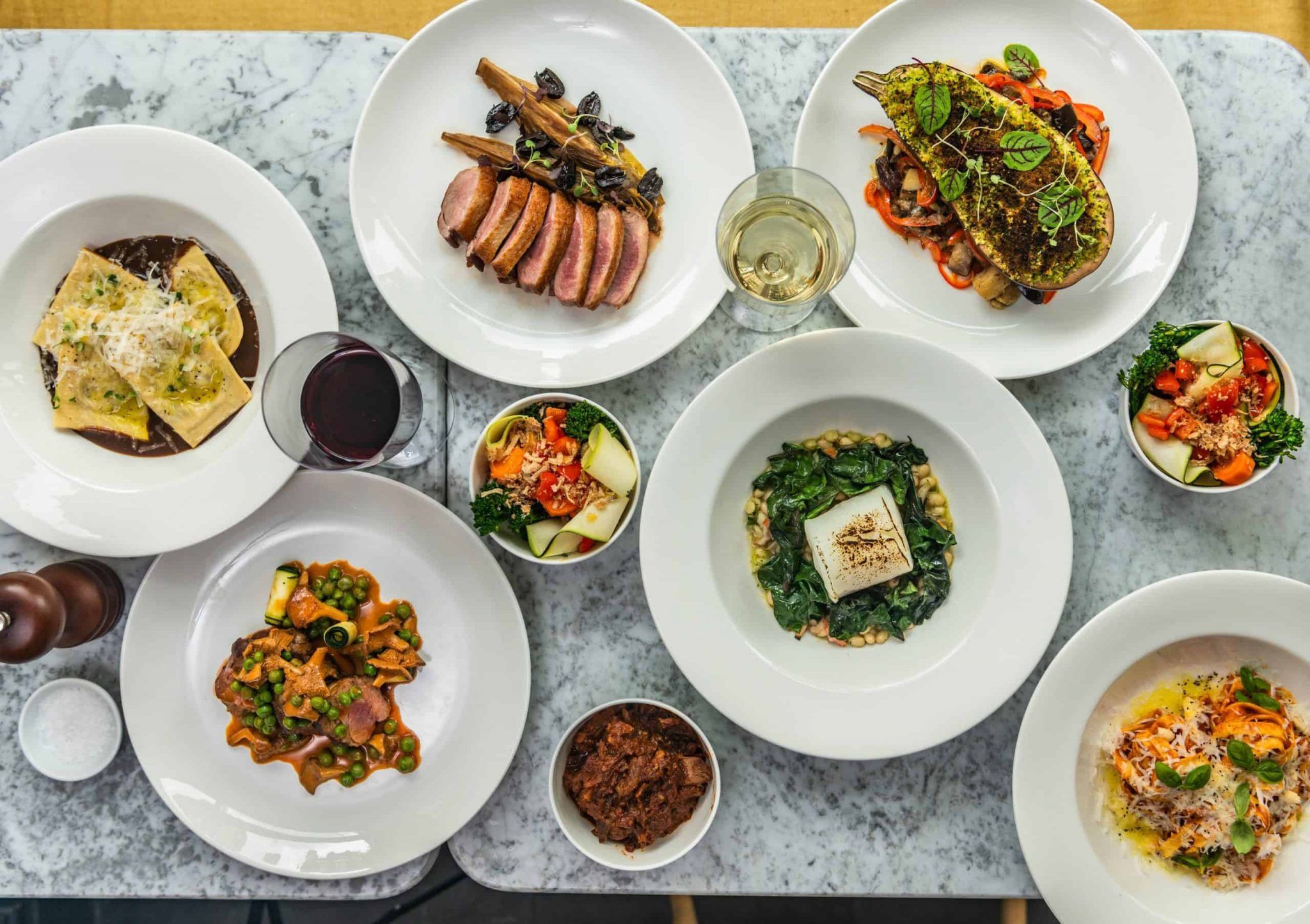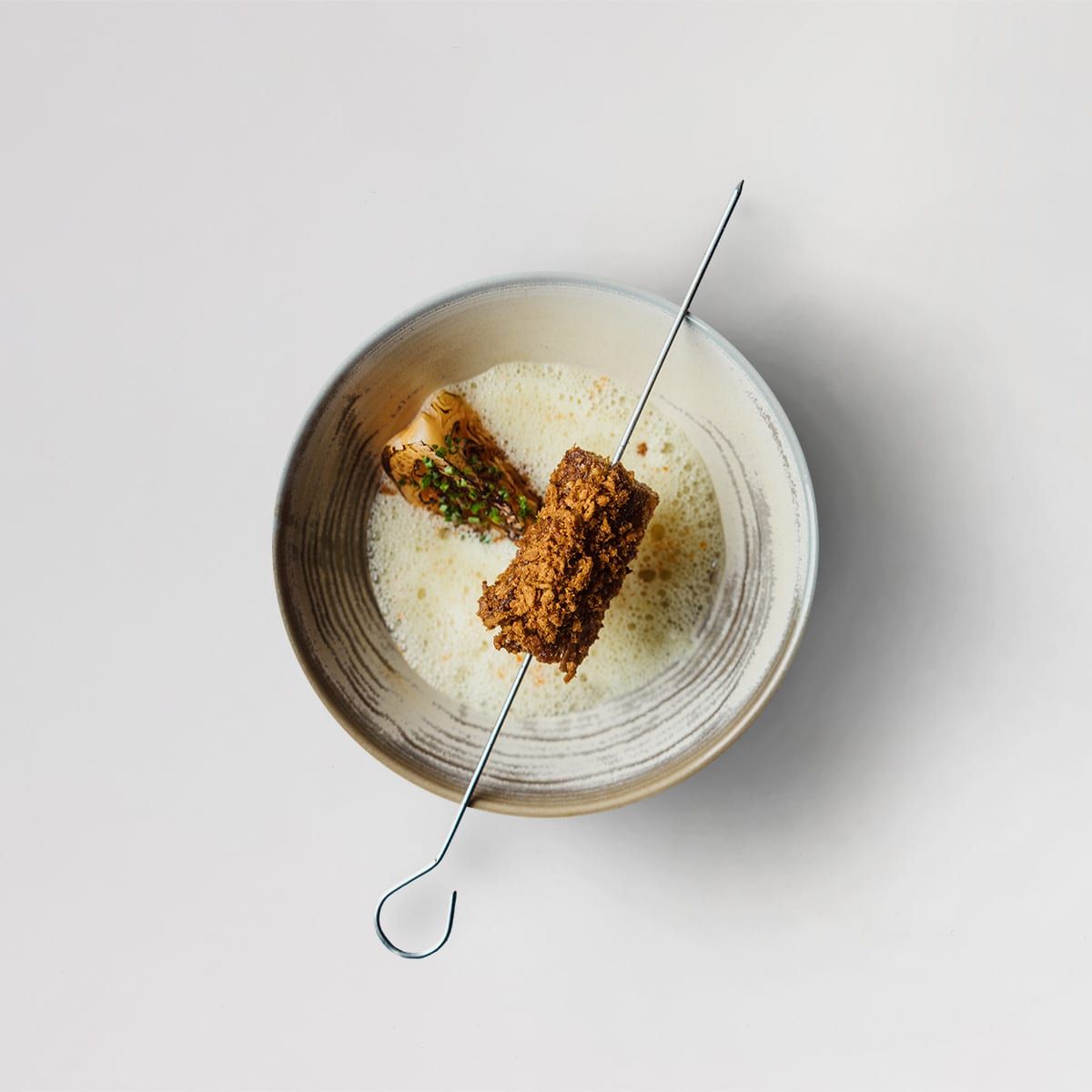One of the most noticeable features of the London restaurant scene post-pandemic is the increasing ubiquity of the tasting menu. These are menus, usually of six or more courses, which offer either no choices or very limited choices, and where each dish is conventionally smaller than a normal main course.
The origin of the tasting menu is in France, where it is known as the menu dégustation, and was originally a way for celebrated French chefs to showcase the range of their skills and expertise by serving diners a series of smaller dishes. This enabled more playful and fun food, in the same way that starters are usually more interesting than main courses, which need to bulk up to satisfy appetite. This approach also changed the dining experience from being one of dinner as part of an evening’s entertainment to, due to the time taken to get through an entire tasting menu, the meal being the evening’s entertainment in itself.
It also allows for a wide range of dishes to be offered without the need for a huge menu with a large number of choices for each course. Not only is an over-extensive menu generally available, and advisedly, considered to be a warning sign of poor quality, a large menu is also financially ruinous for the restaurant, due to the need to have a very wide range of (expensive) ingredients – and in the modern world of increasing food and staff costs it is critical that restaurants do so to survive. So this is in our interests too, as we don’t want a London with fewer restaurants!

In short, with tasting menus restaurants know exactly what each diner is going to eat, which minimises waste and cost. The other obvious way of controlling costs is to control the cost of the non-food overheads such as staff and rent by turning covers rapidly so needing to allocate less of these costs to each diner. But whereas a tasting menu is a long, immersive and, hopefully, luxurious experience, there are few things diners hate more than being told they have to leave before they are ready. Many years ago I had lunch with a friend at the River Café and was told by the waiter that they had ordered a taxi for us and it had arrived. This was before they had even served our pudding. I never returned (albeit probably more fool me given how great the food was).
Restaurants can also further use the tasting menu to enhance their financial position by offering wine pairings, which again provides predictability on the wines that they are likely to sell and reduces the often unseen but potentially ruinous costs of stocking and maintaining an extensive wine cellar.
So, for the restaurants themselves, it seems a no-brainer, but what about for the diner? I think there are two principal reasons why tasting menus are popular with customers.
First, in having originated in high-end restaurants tasting menus have an aspirational appeal. They are seen as, and most often do, provide a more interesting and sophisticated experience than the more conventional starter, main and pudding offering. In short, they have the feel of the special occasion about them and in these cost of living crisis times, it is easier to justify and afford a meal out which is a special occasion than a quiet Tuesday evening meal when you cannot be bothered to cook for yourself.
A great example of this is Six by Nico, reviewed by me earlier this year, which offers six-course tasting menus changing every six weeks for around £40 or £45 depending on which venue. They are always packed and my experience and impression is that a lot of their customers are on a date or are groups on a special evening out for a birthday or other celebration, and the tasting menu is a way of making that date or celebration special.

The second reason is more prosaic and mirrors that of the restautants: it makes the costs of the evening predictable. Diners are living through the cost of living crisis too, and for them it removes the terror of taking someone out for dinner and hearing them order chateaubriand or Dover sole. The wine pairings (which restaurants take care to pitch to match the level of spend on the food menu) also swerves the minefield that is the wine list when on a fixed budget.
So it all makes sense, and frankly, these tasting menus are dishing up some more unusual and interesting food for us diners than would otherwise be the case. Will it last? Maybe, but generally speaking nothing does, so enjoy them while they are everywhere.
Related post: People are just realising that most curry house dishes come from the same sauce

